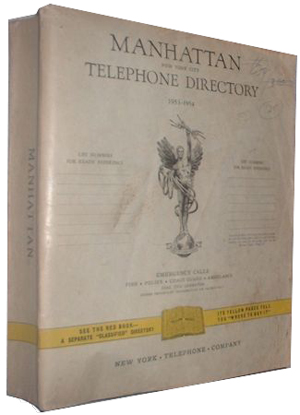
“Spirit of Communication,” better known as “Golden Boy,” was the second-largest sculpture in New York – after the Statue of Liberty -when it was first installed in 1916. The 28-foot gilded bronze statue resides in the lobby of AT&T’s headquarters on Akard Street in Dallas, its latest home in 93 years as a symbol of one of the nation’s most famous corporate names.
In the company’s glory days, Golden Boy towered over Lower Manhattan, 9 tons of bronze covered in the thousands of sheets of gold leaf that gave him his nickname.
For most of the 20th century, the statue turned up on company letterhead and stock certificates, and for much of the middle part of the century on local telephone books.
After the Bell System was broken up in the 1980s, he was exiled to New Jersey, where he was eventually consigned to an office park. Now, after SBC acquired AT&T, adopted its name, and moved its corporate offices to downtown Dallas, he’s here.
Lee Sandstead, who hosts the Travel Channel’s Art Attack, is enthusiastic, almost effusive.
“This is absolutely a serious work of art, and it’s absolutely a masterpiece,” said Sandstead, an art historian. “It’s perhaps the most beautiful depiction of the male figure in American art.”
Sandstead is considered the leading expert on Evelyn Beatrice Longman, the statue’s sculptor.
The arrival of Golden Boy gives downtown Dallas its second corporate icon with classical allusions. The first, of course, is Pegasus, the flying red horse that has crowned the top of the Magnolia Building since 1934. (A full-scale copy, for those afraid of heights, is at ground level in the Old Red Museum of Dallas History & Culture.)
Golden Boy is the older of the two works. Sandstead said the design was chosen in a national competition, and the statue was hoisted, with great fanfare, to the top of AT&T’s headquarters on lower Broadway in 1916. It was the second-largest sculpture in New York, behind the Statue of Liberty, he said, and doubly notable because of its sculptor.
Longman is one of the few women in American history to create monumental sculpture.
“The work was considered too physically demanding for a woman,” he said. “It required lifting heavy equipment up and down scaffolding, and bending metal.”
She was a protegée of Daniel Chester French, working with him on the design of the Lincoln Memorial. She is now largely – and, Sandstead thinks, unfairly – forgotten.
“If she had been born 30 years earlier, she would have been more famous,” he said. “By 1915, her kind of art was beginning to wane in popularity, critics were beginning to be attracted by the modernist movement, which was more abstract.”
The sculpture was moved in 1984 to the company’s new building, whose postmodern-notched roof _ it was nicknamed the Chippendale Building – meant Golden Boy had to be moved to the lobby.
A persistent Internet rumor says that officials, concerned that the male nude could now be viewed up close and eye level, ordered Golden Boy un-gendered. Not true.
The sculpture was moved to one site in New Jersey in 1992, then to another 10 years later. Earlier this year, it decamped for Texas.
A former AT&T chairman once explained Golden Boy’s nomadic existence by saying, “He goes where we go.”
An AT&T spokeswoman last week said the company still feels the same way.
“It’s always been with the corporate headquarters. It’s absolutely fitting that he should be here now,” Sarah Andreani said.
The work now commands the lobby facing AT&T Plaza. Company employees on a recent morning seemed already used to Golden Boy’s presence, scurrying to their jobs without glancing up.
But visitors seemed impressed, snapping photos on their cellphones and peppering the reception desk with questions.
“I take it it’s not real gold,” one woman said.
“Just in small sheets,” the receptionist explained.
“Well, I think he’s cool,” she replied.
Copyright 2009 Associated Press. All rights reserved. This material may not be published, broadcast, rewritten, or redistributed.
AP-WS-07-27-09 1308EDT


